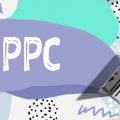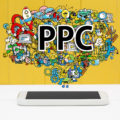Anatomy of a Google Ad
The head bone’s connected to the neck bone,
The neck bone’s connected to the body bone,
The body bone’s connected to the click bone,
Now shake dem Google Ad bones!
That old children’s song seems fitting for an October post. It’s also a good way to think about the various components that make up a living, breathing (well, maybe not), but an anatomically correct, totally robust responsive Google search ad.
With one exception.
The head bone (headline) may be connected to the neck bone (URL), but the neck bone may suddenly reconnect with a different chest bone (description) or switch to another head bone if needed.
Say what?
Responsive Search Ads are More Like Mr. Potato Head

That’s because the headlines and descriptions you or your content marketing agency provide are not fixed or permanently attached, but rather recombine depending on what the machine or algorithm is sensing at any given moment. Welcome to the scary world of computerized content writing and words that go bump in the night.
Since Google Ads appear next to Google search results, they are naturally the most targeted pay-per-click marketing tool you can purchase. When people type in products and services you offer, abracadabra, suddenly your ad appears. Pay only when they respond either by clicking through to your website or calling your number. Thus the name, responsive advertising.
But responsive has another meaning. Whether you want to bring new shoppers to your site or broadcast a super sale, Google Ads is in a position to help meet those goals. Just provide a number of versatile headlines and descriptions and let their “machine learning” respond to user patterns and create the optimum combinations based on observable behaviors.
A Word About Adwords
If your previous seo marketing strategy included Google Adwords, the name has changed to Google Ads and some of the text formats have been expanded. Advertisers are now encouraged to have anywhere from three to 15 headlines in the hopper and at least four descriptions available in their ad group. Unlike standard stationary text ads, Google applies algorithms to see what’s working and what’s not. If certain wording is showing a dip in performance, the Google Ads system will stop serving it and reach into your stash for other headlines and descriptions to show users.
Three Parts to a Great Google Ad
The Head(line)

The kickstarter for a successful ad is the headline. The first thing a customer sees, popped in blue type, it should make them think, “Yes, I found it!” You can actually have up to three separate headlines in a row, as shown in this ad. Make them distinct and varied in length from short to the maximum characters allowed. One could be your business name, but it doesn’t have to be. Just using Wayfair wouldn’t work for the wallpaper search since hardly anyone knows Wayfair sells wallpaper. Here the three headlines breakout as:
- an alliterative use of Wayfair Wallpaper (the keyword ‘wallpaper’ triggered the search)
- the company’s stated discount (probably “pinned” or required in every ad)
- the company’s main website homepage (possibly another must-have pin).
Notice how capitalizing the first letter of each word makes the message more attractive. When composing these headlines, Google lets you test the ad strength like you would a new password by using their nifty Responsive Search Ad Indicator.
The Neck (Display URL)
Connecting headline to description is the destination or display URL. This customized link needs to be easy to understand. Basically, if you are directing customers to the home delivery information about your restaurant, you switch out the long string of code for that page (bubbletea.com/urlzzzbic/2servdeliv) with one word such as /delivery. Many advertisers will use their domain (bubbletea.com) plus the service being advertised (www.bubbletea.com/delivery) as the destination URL.
The Body (Description)
The new one allows up to 270 characters (three headlines of 30 characters and two description lines of 90 characters), roughly doubling the maximum text.

You’ve got three lines of 30 characters each, that’s up to 90 characters to work with so put them to good use. While Autoscope clearly caters to BMW owners, they are hinting that their 35 years of experience is better than taking your repairs to a high-priced dealer. Make sure your ad redirects to the landing page that matches your offer, featuring options for this particular make of car.
The Ease of One-Click Ad Extensions
Responsive ads make use of the Call button for one-touch dialing from the ad. You can also use the Directions button to bring up the location on Google Maps. Or use the Website button to go to the corresponding page.
Undoubtedly, Google Ads has their place in the world of search results. They created that space and now they own it. There’s a tremendous opportunity to connect with customers at the very moment they are looking for you. If you decide to go this route, make sure you understand the elements of a good Google Ad. Use the New Ad Indicator to test the strength of your wording and make sure there are plenty of promotional angles for the algorithm to play with.
It’s not a ton of room, but a well-conceived, concise message can deliver more clicks, more conversions and, ultimately, more compounds on your initial investment. For help setting up a Google Ads campaign, you can always contact us. We work with more than a skeleton crew…and our prices aren’t scary, either.






